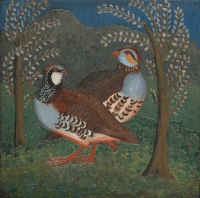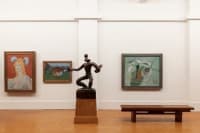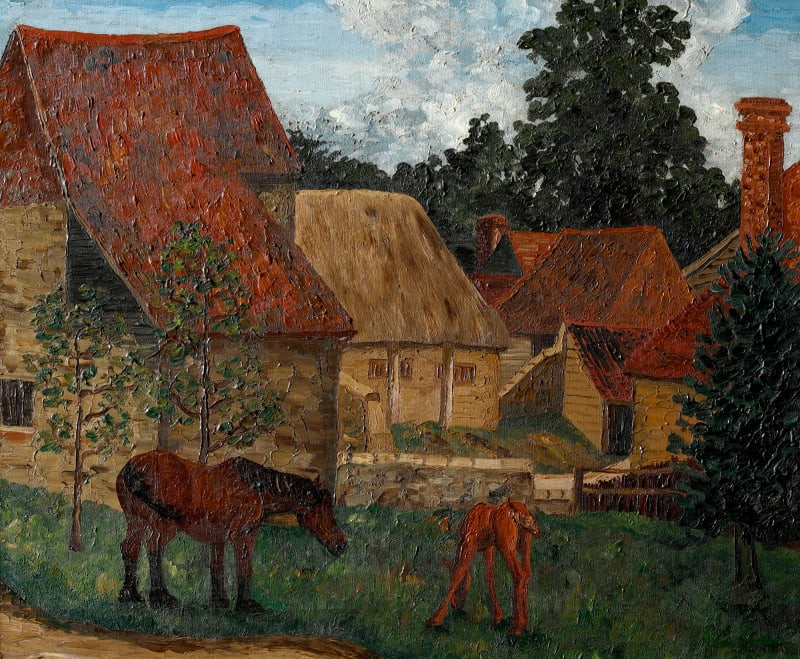Second only to his flower paintings, bird paintings remain one of the most important subjects in Morris’ oeuvre. Throughout his lifetime, he only painted around fifty oils of birds ranging from anatomically accurate studies to monumental, politically loaded canvases. This charming oil painting of two red-legged partridges captures a subtly surreal quality, blending keen observation with a sense of the uncanny.
Morris’s practice of breeding birds, much like his horticultural pursuits, provided him with an intimate insight into their behaviour and biological structure, leading one critic to comment on the ‘reptilian ancestry’ carefully observed by the artist. He often used ornithological prints as source material which he imbued with his observations of the natural world and his playful sense of design and colour. These paintings are key to understanding Morris’s artistic vision, which often blurred the boundaries between art, nature, and scientific study.
In 1934, Morris was invited by the influential art dealer Sydney Burney to participate in a...
Second only to his flower paintings, bird paintings remain one of the most important subjects in Morris’ oeuvre. Throughout his lifetime, he only painted around fifty oils of birds ranging from anatomically accurate studies to monumental, politically loaded canvases. This charming oil painting of two red-legged partridges captures a subtly surreal quality, blending keen observation with a sense of the uncanny.
Morris’s practice of breeding birds, much like his horticultural pursuits, provided him with an intimate insight into their behaviour and biological structure, leading one critic to comment on the ‘reptilian ancestry’ carefully observed by the artist. He often used ornithological prints as source material which he imbued with his observations of the natural world and his playful sense of design and colour. These paintings are key to understanding Morris’s artistic vision, which often blurred the boundaries between art, nature, and scientific study.
In 1934, Morris was invited by the influential art dealer Sydney Burney to participate in a unique project alongside leading figures of the period, such as Barbara Hepworth, Duncan Grant and Vanessa Bell. The brief was to create a miniature work that epitomised the artist’s style and reflected contemporary modernist movements. The works were subsequently lost for decades until Burney’s grandson found some of them in an old suitcase; of the 34 original works commissioned, only 11 have survived. One of these surviving pieces is Morris’s contribution – a painting of a partridge set in a landscape that clearly relates to the present work [fig. 1]. This is now in the collection at Pallant House Gallery, Chichester.











